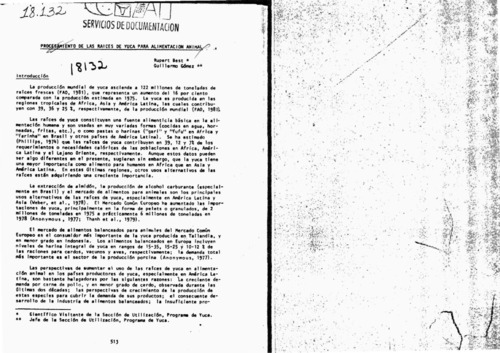Procesamiento de las raices de yuca para alimentacion animal
Different aspects regarding the terminology used in cassava drying, the process and factors affecting it, and methods (artificial continuous drying, through-circulation batch drying, natural drying on concrete and on trays) are described. The perspectives of increasing the use of cassava roots in animal feeds are good, especially in Latin American countries which import cereal grains to meet the demand of animal feed processing plants. Production associations or cooperatives could be formed; these would be responsible of disseminating the most adequate drying process for animal nutrition. Based on the results obtained on the northern coast of Colombia, demonstrative pilot plants should be set up in order to determine the feasibility of the process and to obtain data on the real working costs. A 500 m2 factory could be used by an association of 20 producers and would process 240 t during the 4 mo. of the dry season. Investment required to install this factory is Col$ 434,900 and possible utility, Col$ 1175/t dry cassava. Figures on the drying processes and cassava chippers are included along with tables on the influence of climaticalconditions on the drying process and the investments required to install a 500 m2 cassava drying factory. (CIAT)

